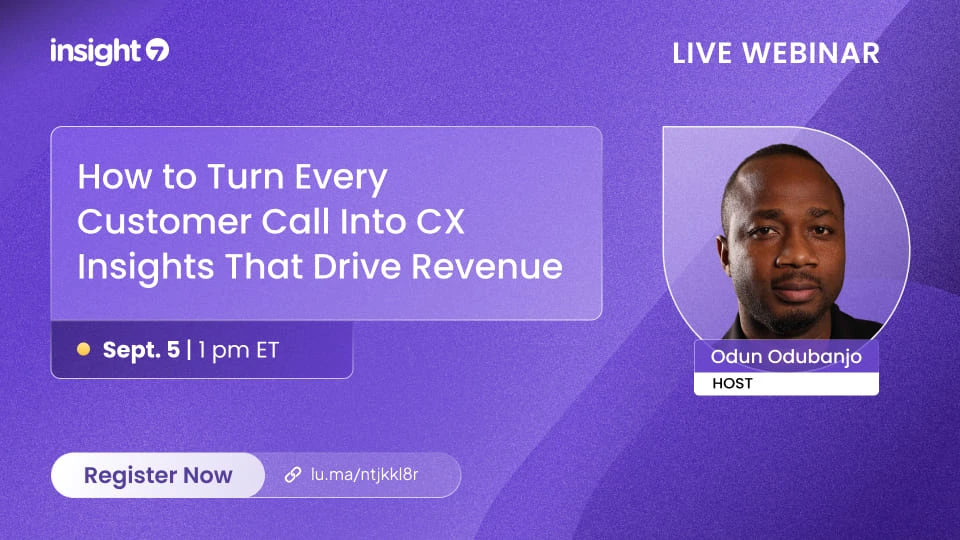How to Analyze Brand sentiments
-
Bella Williams
- 10 min read
Brand Sentiment Analysis plays a crucial role in understanding how consumers perceive a brand in today's competitive landscape. Many factors influence customer opinions, from product quality to marketing strategies. By analyzing sentiments, businesses can gain insights into customer feelings, enabling them to refine their approach and foster stronger connections with their audience.
This analysis goes beyond simple measurements of likes or dislikes; it delves into the emotional attitudes that drive customer loyalty. As organizations develop their brand strategies, mastering Brand Sentiment Analysis can lead to significant improvements in customer engagement and overall brand reputation. Understanding the "who" and "why" behind consumer opinions empowers brands to make informed decisions that resonate deeply with their audience.
Generate visualizations from your qualitative data. At Scale.

Understanding Brand Sentiment Analysis
Brand Sentiment Analysis is a vital tool for understanding consumer perceptions of a brand. This analysis helps brands gauge public opinion by examining data from various sources such as social media, reviews, and customer feedback. By tracking both positive and negative sentiments, businesses can identify trends, address concerns, and enhance customer service.
To effectively conduct Brand Sentiment Analysis, it's crucial to focus on specific aspects. First, define relevant keywords and phrases related to the brand's offerings. Next, collect data from multiple platforms to ensure a comprehensive overview. Utilize specialized tools for sentiment detection, as they help categorize feedback more accurately. Finally, interpret the results to develop actionable strategies. By understanding brand sentiment, companies can strengthen their relationship with customers and make informed decisions that align with their audience's feelings and expectations.
What is Brand Sentiment Analysis?
Brand Sentiment Analysis involves examining customer feedback to understand how a brand is perceived in the market. This process allows businesses to gauge the emotional tone behind online conversations about their products or services. By analyzing various data sources like social media, reviews, and surveys, organizations can uncover trends in customer opinions that reveal their overall sentiment.
Understanding the nuances of Brand Sentiment Analysis is crucial for businesses aiming to refine their marketing strategies. It not only highlights positive endorsements but also identifies areas where customers express dissatisfaction. This valuable insight helps brands tailor their messaging and improve customer experiences. By successfully analyzing brand sentiments, organizations can foster better relationships with their audience, leading to increased loyalty and sales.
Understanding Brand Sentiment Analysis
Brand sentiment analysis involves examining consumer emotions and perceptions toward a brand. This analysis helps businesses understand how they are viewed in the market and identify any existing strengths or weaknesses. By gathering public reactions from social media, reviews, and other platforms, companies can gauge sentiments that affect their reputation and customer loyalty.
To effectively perform brand sentiment analysis, start by collecting relevant data from various sources. Tools such as social listening platforms or customer feedback forms can prove invaluable in this initial phase. Next, utilize sentiment analysis software to process this data, employing techniques like natural language processing to interpret emotions accurately. This enables brands to adapt their strategies based on real-time insights and consumer feedback, ultimately driving better engagement and satisfaction. Recognizing and addressing sentiments plays a crucial role in enhancing brand reputation and meeting customer expectations.
Importance of Analyzing Brand Sentiments
Analyzing brand sentiments is crucial for businesses seeking to understand their relationship with customers. Brand sentiment analysis provides insights into how customers perceive a brand, which can significantly influence marketing strategies and product development. By assessing public opinion, companies can identify strengths, weaknesses, and overall brand image. This understanding enables them to address concerns promptly, enhancing customer trust and loyalty.
Furthermore, gauging brand sentiments helps in tailoring marketing campaigns to resonate with target audiences. Positive sentiments can be amplified, while negative ones can be mitigated through strategic adjustments. This proactive approach fosters a more authentic connection with customers, ultimately driving reputation and sales. By regularly conducting sentiment analysis, businesses can stay in tune with market trends and consumer expectations, ensuring they remain competitive and relevant in a rapidly changing environment.
Evaluate Performance on Customer Calls for Quality Assurance.
Steps to Conduct Effective Brand Sentiment Analysis
To conduct effective brand sentiment analysis, begin with a robust data collection strategy. Gathering qualitative and quantitative data from customer feedback, social media, and online reviews is essential to paint an accurate picture of public perception. This data helps capture both positive sentiments and negative critiques that reveal strengths and weaknesses in your brand.
Next, choose the right tools and techniques for analysis. Natural Language Processing (NLP) tools can automate sentiment classification, allowing for faster analysis of large data sets. Additionally, visual analytics can help in understanding trends and patterns in feedback over time. Both methods provide deeper insights for strategic decision-making. By systematically approaching these steps, brands can transform raw data into actionable insights, improving both customer satisfaction and brand reputation.
Step 1: Data Collection for Brand Sentiment Analysis
Collecting data is the foundational step in brand sentiment analysis, as it sets the stage for accurate insights. To begin, identify the sources from which you will gather sentiment data. This could include social media platforms, online reviews, survey responses, and customer feedback. Each source provides distinct insights into how your brand is perceived across different audiences.
Next, ensure that the data collected is comprehensive and relevant. Include both quantitative data, such as star ratings, and qualitative data, like customer comments, to capture the full scope of sentiment. Additionally, consider segmenting the data by demographics or product categories. This will allow for a nuanced analysis that reveals trends and patterns in customer sentiment. Ultimately, a well-rounded data collection process will empower you to perform meaningful brand sentiment analysis, driving informed decisions and refined marketing strategies.
Step 2: Tools and Techniques for Analyzing Sentiments
When conducting brand sentiment analysis, it's essential to utilize various tools and techniques to derive valuable insights. Start by employing text analysis software that focuses on sentiment detection, which helps categorize customer feedback as positive, negative, or neutral. These tools often use natural language processing (NLP) to analyze the emotional tone of comments and reviews, providing a clearer view of how your brand is perceived.
Another effective approach is social media listening tools. They can help monitor brand mentions across multiple platforms, allowing you to assess public sentiment in real time. By combining these techniques with qualitative insights from customer surveys, you can develop a well-rounded understanding of brand sentiment. Ultimately, the goal is to synthesize data from various sources to inform marketing strategies and improve overall customer satisfaction.
Conclusion: Harnessing Insights from Brand Sentiment Analysis
Brand sentiment analysis serves as a valuable tool for understanding consumer perceptions of a brand. By analyzing data collected from various sources, organizations can uncover negative sentiments and capitalize on positive interactions. These insights provide an opportunity to refine marketing strategies and improve customer satisfaction.
In conclusion, effectively harnessed insights from brand sentiment analysis can profoundly influence business decisions. Regularly monitoring sentiments allows brands to adapt quickly to consumer needs and market trends. Embracing this analytical approach ensures a brand maintains relevance and fosters stronger connections with its audience.







